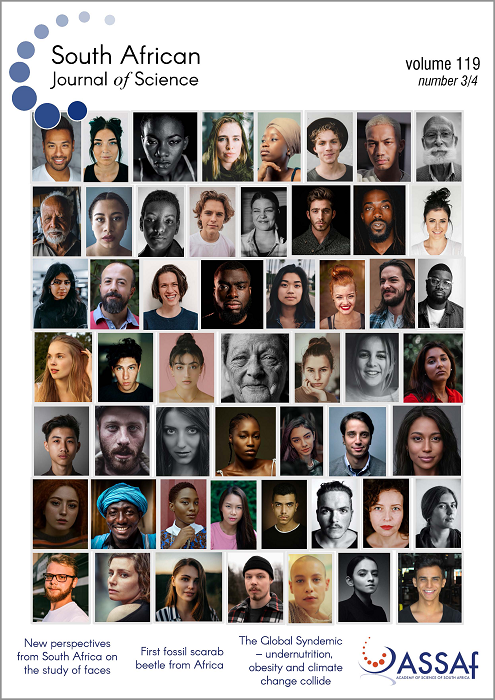Influence of season and other factors on avian Trypanosoma spp. and microfilarial prevalence in the Lowveld, South Africa
DOI:
https://doi.org/10.17159/sajs.2023/10358Keywords:
Afrotropical, birds, microfilariae, South Africa, TrypanosomaAbstract
To comprehend the effects of emerging infectious diseases on both human and animal health, it is necessary to understand the ecology of pathogens that have wildlife reservoirs. In this study, we determined the prevalence of the parasites Trypanosoma spp. and filarial nematodes in the bloodstream of birds in and around the Kruger National Park, South Africa, partly to test the hypothesis that season influences parasitaemia. Other factors considered were foraging habits, gregariousness or solitariness, and whether location might facilitate contact between birds and parasite vectors. Microscopy was used to screen stained blood smears prepared from 685 captured birds of 87 species. It was found that 3.9% of the birds were infected with filarial nematodes (as reflected by the presence of microfilariae) and 3.1% with Trypanosoma spp. No cases of coinfection with both types of parasite were encountered. Ground-foraging and solitary birds had the highest parasite prevalences compared to other birds. Infections were recorded throughout the year at all six sites. The respective percentages of birds harbouring the two parasite types in the dry season were the same (both 2.3%), whereas microfilariae dominated in the wet season (6.9%) and the prevalence of Trypanosoma spp. then was 1.4%. These findings represent new knowledge concerning avian haemoparasite prevalence in an Afrotropical setting – something that has so far been poorly studied.
Significance:
- The determination by microscopy of the prevalence of microfilariae of filarial nematodes (3.9%) and Trypanosoma (3.1%) in the peripheral blood of 685 birds of 87 species provides new knowledge on birds in Africa.
- Unexpectedly, ground-foraging and solitary birds had the highest parasite prevalences.
- The possibility of human infection with these two types of avian parasites is considered.
Published
Issue
Section
License

All articles are published under a Creative Commons Attribution 4.0 International Licence
Copyright is retained by the authors. Readers are welcome to reproduce, share and adapt the content without permission provided the source is attributed.
Disclaimer: The publisher and editors accept no responsibility for statements made by the authors
How to Cite
- Abstract 562
- PDF 614
- EPUB 452
- XML 228












.png)